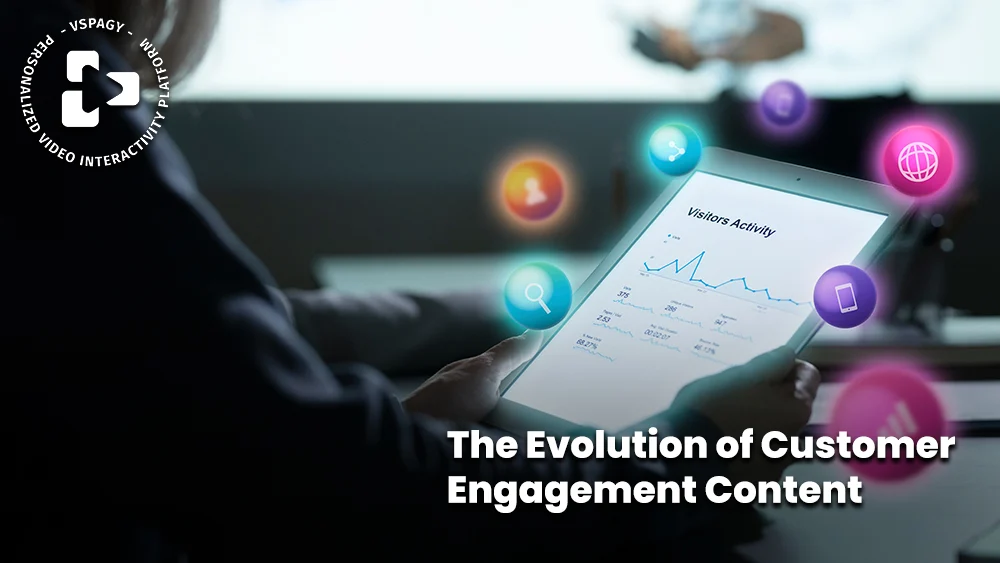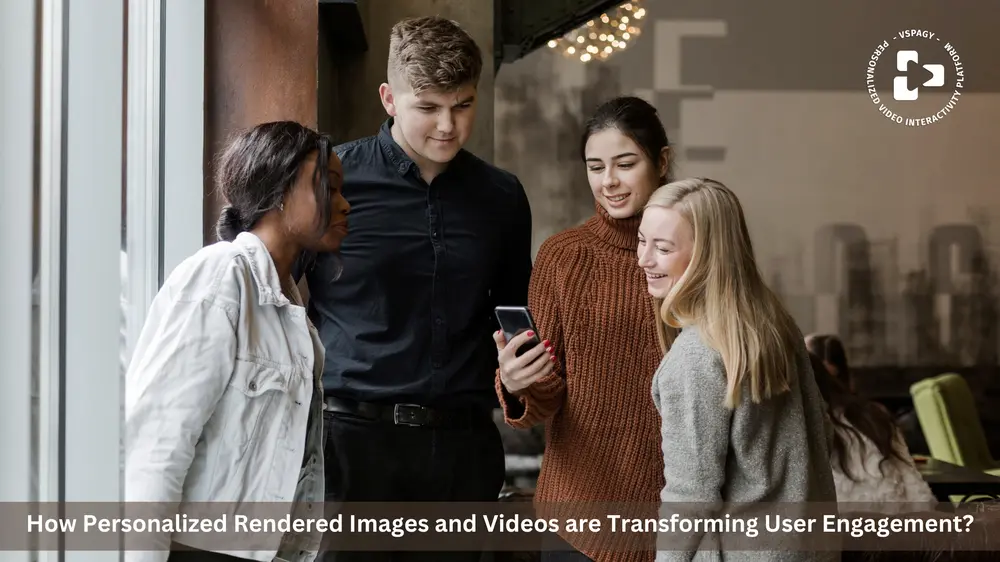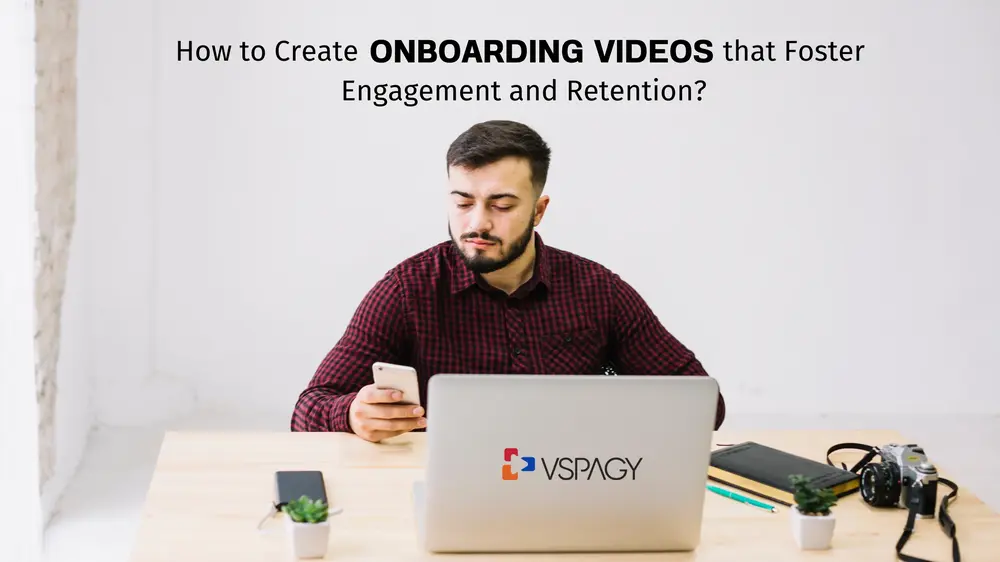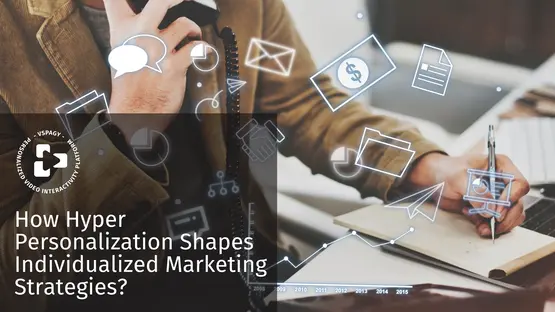From Static to Smart: The Evolution of Customer Engagement Content
Oct 31, 2025

Introduction
The brands have been delivering the same messages to all people for a long time. They used standard emails with fixed templates, web pages with the same information accessible to everyone, and the same video with the same story, no matter what the audience.
In the current headwinds, the customers are demanding something more. They require content that acknowledges their presence, their interests and what they value and how to assist them in making progress.
Due to this, marketing has taken another stage, and this is based on relevance and not on sheer numbers. The traditional static content is being transformed into intelligent, agile communication driven by AI, personalized video content and real-time data, as well as tools to customize messages in bulk.
This is where the movement of customer engagement content is discussed, what is driving this shift and what companies can do to stay relevant in an environment of increased expectations of personalization, where popping out is no longer a nice to-have, but it is a must-have.
The Problem with Static Content
The times of the inert content are no more. Over the years, a company or a brand could use the same newsletter or open the same product page or even put a video advert that did the magic on all its audiences. This method was cost-effective, manageable and adjustable.
The customers nowadays are more discriminating. They glance rapidly, ignore commonplace messages and have less tendency to pay attention unless they feel that the content is applicable. A one-size-fits-all approach cannot be expected anymore.
Static content suffers from three main limitations:
-
Lack of personal relevance- Messages that are targeted inappropriately are not relevant as well in the requirements.
-
Inflexibility- There is no possibility to vary the content on the basis of customer behavior, location or even preference.
-
No feedback loo- Brands simply do not learn very much about the way that static content is consumed, and this creates a difficulty in the capability to enhance itself over time.
This is where the content that is dynamic, intelligent comes into the equation and transforms it all.
What Is "Smart" Content?
Smart content adapts to the viewer. It uses real-time data, customer behaviour, and system integrations to shape the message as it's delivered.
This includes formats like:
-
Web pages that change based on a user's past visits
-
Emails that adjust based on purchase history
-
Personalized interactive videos that respond to viewer choices in real time
These content types do more than speak to the audience; they speak with them, responding to who they are and what they want.
It's the difference between watching a pre-recorded TV commercial and having a guided conversation with a brand, even if that conversation is delivered through automation.
The Role of Video in the Evolution of Engagement
No other form of engagement tool has changed more than video. It began with initial advertisements and explanation videos, and now has grown to be interactive, personal, and bilateral
This shift is made by three large trends:
-
AI Personalized Video Content
Brands can offer custom video content by editing the scene or message, or pronouncing a name differently per individual, using one video content and software that modifies it. Every single video sounds more like a personal conversation rather than the idea of mass promotion.
As an example, a bank may create a personal video and send it to each customer, going through their portfolio with the help of client account information and adding a lifelike voice or narrator.
-
Interactive Customer Video Journeys
This is the video experience that allows the customer to make a decision, e.g., choose what he/she wants to learn, watch various features of the product, or select the path according to his/her interests. This places the customers in charge and allows the brands to find out what interests them most.
-
Real-Time Personalized Video Creation
This is an interesting new capability, currently available to brands: real-time production of personalized video, where customer data is drawn in to create the message, in real time--promotions, names, locations or product recommendations are possible. Such high speed gives a more perception of relevance and urgency, which has a wide impact on customer behaviour.
Why Personalization Matters More Than Ever
The expectation for personalization is no longer limited to high-end brands. Customers now assume every interaction from the first ad to post-sale communication should reflect their preferences and history.
When done right, personalization leads to:
-
Higher engagement- People pay attention when content feels made for them.
-
Better conversion rates- Relevant offers are more likely to prompt action.
-
Stronger loyalty- Customers feel seen and valued, not just targeted.
The opposite is also true. Irrelevant or tone-deaf content can quickly lead to unsubscribes, negative feedback, or abandoned journeys.
Building a Smart Engagement Strategy
So how does an ordinary content company become a smart one without breaking the bank or the backs of employees? It begins with the proper attitude and the proper equipment.
-
Start Small, Then Scale
You do not have to personalize everything at a go. Choose an area that has a lot of impact on your business, such as a welcome campaign or the journey after purchase, and make that personalized.
This could be demonstrated, e.g. by a welcome video that adapts to the needs of every individual. New users are no longer presented with a conventional tutorial; they are given a walkthrough that refers to their role, objectives, or behaviour thus far.
-
Use Right Technology
Smart content needs a strong foundation. This includes:
-
Video personalization tools for enterprises - It is a platform that allows a video to vary depending on CRM or behavioural data.
-
Customer data platforms (CDPs) - CDPs are unified systems designed to gather and structure customer information from various channels, making it easier to analyses and apply that data effectively.
-
Automation workflows - Triggers and rules that determine when and how personalized content is delivered.
The cumulative effect of these tools offers the structure of a video marketing personalization platform with the ability for substantial and valuable interactions.
-
-
Test and Learn
Smart content isn't about guessing, it's about learning.
With tools like data-driven video personalization, brands can track which content resonates most with different audience segments. This feedback loop helps teams iterate and improve content continuously, instead of relying on static campaigns that are quickly outdated.
Real-World Examples of Smart Engagement Content
Commercial Applications of Constructive Engagement Content Examples In Real Life:
-
Retail: The company sends such a customer a birthday video in which they may see the clothes based on the previous purchases and get a complimentary discount by using video and mail.
-
SaaS: The software company develops personalized customer path videos, comparing a trial user to the successful users and providing each feature-specific tips that will help a trial user use it more.
-
Finance: The bank's communication with customers allows the use of dynamic video that allows explaining the features of accounts based on the short video content that is personalized to each customer's preferred plan and objectives.
-
Healthcare: A wellness app provides fitness programs via video delivery that is specific to each user, depending on progress, location and data about the user's health.
Not one of them is futuristic. They are already there and are transforming the customer perceptions to value, connection and trust.
Challenges to Avoid
The advantages of personalization are common sense, but brands have to be careful. Here are 3 challenges outlined below:
-
Over-personalization: Just because you have access to someone's data doesn't automatically mean it's appropriate to use it. Relevance and respect must guide personalization efforts.
-
Poor data hygiene: If your data is outdated or inaccurate, your content will likely miss the mark and, in some cases, lead to awkward or damaging errors that could've been avoided with cleaner data practices.
-
Missing human touch: Even smart content needs heart. The tone, pacing, and visuals still matter; people connect with emotion, not just logic.
Customer interaction has transformed so much- static emails and videos that generalize can be referred to as the before group, as compared to the intelligent and responsive materials that cater to users on different levels.
Frequently Asked Questions
What is the difference between static and smart content?
Smart content, on the other hand, dynamically adapts to each user based on their data, behavior, and preferences. It's powered by AI and automation to create real-time, personalized experiences that are more engaging and relevant.
How can brands start implementing smart engagement strategies?
Brands should begin small-personalizing one impactful area like onboarding or retention campaigns-before scaling. Using the right tools such as video personalization platforms, customer data platforms (CDPs), and automation workflows allows companies to grow efficiently while improving message relevance.
What is meant by "smart content" in marketing?
Smart content refers to digital assets-like web pages, emails, or interactive videos-that adjust automatically based on user data, demographics, and actions. It leverages AI, automation, and integrated customer data platforms (CDPs) to deliver personalized messages that feel more like a conversation than a broadcast.
How does AI enhance customer engagement through video personalization?
AI enables brands to generate personalized videos at scale-modifying elements like names, visuals, or voiceovers for each recipient. This makes the message feel tailor-made, increasing emotional connection, relevance, and conversion rates without requiring manual editing for every user.
What are interactive customer video journeys?
Interactive video journeys let viewers control their experience-choosing what to watch, explore, or learn next. This two-way communication empowers customers, increases engagement time, and gives brands insights into user preferences and decision-making patterns.
Conclusion
The dynamic of the shift away from old styles of content to smart content is not about the use of increased complexity. It is about making it more applicable. Utilizing such tools as AI-personalized video content, the personalized video journey of customers, and tools to personalize video within enterprises, the brands manage to design their communication that will not be personalized and will still be economical and easy to scale.
The brands that adopt this change today will not only become different, they will establish long-standing relationships where the rules that apply are those where attention is not just given, but gained.
Recommended Articles:
-
Why Enterprises Are Embracing AI-Generated Human Avatars




